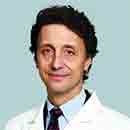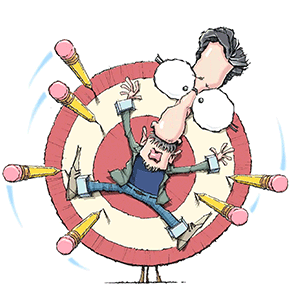C-Force: Good Exercising Judgment Not as Easy as Some Think
In today's world, physical inactivity remains a problem. In fact, it has become a major concern. As reported by Healthcanal, in 2020 just 24.2% "of U.S. adults met guidelines for aerobic and muscle-strengthening exercise. ... Among all adults, 46.9% get enough aerobic activity, compared to 31.0% who get enough muscle-strengthening activity."
Now that the Paris Olympics -- the ultimate stage for peak physical activity -- are behind us, a question remains: Can the Games be the vehicle they were advertised to be for converting our sports watching into sports participation? Or for increasing exercise in general based on the Olympic organizers' message "that regular physical activity is both good for you and easy to adopt"?
William Cornwell is a sports cardiology professor and director at the University of Colorado Anschutz Medical Campus. In a February post on The Conversation, he stresses that "exercise has long been recognized by clinicians, scientists and public health officials as an important way to maintain health throughout a person's lifespan. It improves overall fitness, helps build strong muscles and bones, reduces the risk of chronic disease, improves mood and slows physical decline."
Writes Cornwell, "I'm often asked how much and what kind of exercise is necessary to get the benefits of exercise. ... The American Heart Association generally recommends 150 minutes of moderate-intensity exercise, such as brisk walking, or 75 minutes of vigorous-intensity exercise, such as running, each week. It also recommends muscle strengthening exercises at least twice per week.
"Many people also wonder about the risks of exercise, and what happens if you exercise too much. ... When people exceed these guidelines, the heart may remodel itself in response -- that is, it begins to change its size and shape. As a result, heart function may also change. These changes in heart structure and function among people who engage in high levels of exercise are referred to as the athletic heart, or athlete's heart. Athletic heart doesn't necessarily cause problems, but in some people it can increase the risk of certain heart issues. ... To understand how exercise affects the heart, it's important to consider what kind of exercise you're participating in."
According to Cornwell, "exercise is generally divided into two broad categories: dynamic and static." A dynamic exercise like running requires "the heart to pump an increased amount of blood, compared to the amount delivered to the body at rest. ... For example, when running, the amount of blood the heart pumps to the body may increase by threefold to fivefold compared to at rest. Static exercises, like weightlifting, gymnastics or rock climbing, require the body to use skeletal muscle in order to push or pull heavy amounts of weight. While the heart does pump more blood to skeletal muscles that are working during these activities, these kinds of exercises depend on a muscle's ability to move the weight."
Cornwell believes "it is important to distinguish between dynamic and static exercise because the heart adapts differently according to the type of exercise you engage in over time. Dynamic exercise increases the volume of blood pumping through the heart and can cause the heart to become enlarged, or dilated, over time. Static exercise increases the amount of pressure on the heart and can also cause it to become enlarged over time but with thickened walls.
"Though elite athletes may have an increased risk of developing athletic heart, exercise undoubtedly remains one of, if not the best, methods to maintain a healthy lifestyle. ... If someone does not exercise routinely, their heart will become stiff and not pump blood as well as it once did. Routine exercise -- especially dynamic exercise like running -- maintains a compliant heart and prevents stiffening. ... A stiff heart has difficulty filling up with blood and has difficulty pumping blood through the body."
"It is never too late to start exercising," Cornwell reminds us, citing "a 2018 study of 53 sedentary people mostly in their early 50s" who participated in a "two-year exercise training program" that included "a combination of running, cycling and elliptical exercise had hearts that became more compliant compared to the hearts of those who did not exercise."
Exercise and Addiction Recovery
"Addiction is a treatable health condition," writes WebMD reporter Keri Wiginton. "But about 60% of people who seek help for a substance use disorder (SUD) will use drugs or alcohol again within a year," she writes. So researchers continue to search for new and effective ways to prevent relapse. There's growing evidence that exercise can be a powerful tool in your recovery."
According to Wiginton, "experts think regular physical activity can act as a healthy stand-in for addictive substances. That's because exercise and drugs of misuse work on similar parts of your brain. They both activate your reward pathway, which triggers the release of feel-good chemicals like serotonin and dopamine."
Wiginton writes that more research is needed to better understand "how exercise affects addiction." But studies suggest that regular exercise might help ease withdrawal given its ability to "lessen anxiety, depression and stress," which are common symptoms during recovery. Regular exercise can also distract "from cravings or make them less powerful." It also presents an opportunity to replace triggers by providing a new experience and an opportunity to build a new social network while helping to "avoid people, places, or things" associated with drugs.
Wiginton points out that regular exercise can also "boost your self-esteem and self-control. It's easier to manage stressful stuff when you feel good about yourself. ... Regular physical activity can help your mind work better.
"But it's possible to overdo it or crave exercise in a similar way as drugs and alcohol. There's evidence that this is more likely to happen to people who have another addiction. ... If you start to exercise in an unhealthy way" by adding "too much physical activity," it can raise the "odds of injury, anxiety, depression, and social problems."
========
Follow Chuck Norris through his official social media sites, on Twitter @chucknorris and Facebook's "Official Chuck Norris Page." He blogs at http://chucknorrisnews.blogspot.com. To find out more about Chuck Norris and read features by other Creators Syndicate writers and cartoonists, visit the Creators Syndicate webpage at www.creators.com.
Copyright 2024 Creators Syndicate, Inc.























Comments